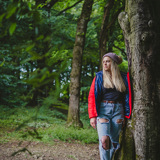Sony 90MM F2.8 Macro Review
Well, as anyone who is into cameras knows it’s tempting to look into camera models and specs. New camera models come out all of the time and it’s too easy to tempt yourself into buying an upgrade, when sometimes the actual changes to the upgraded model are so slim. More megapixels, higher video resolutions and frame rates are all important but there’s nothing more important to improving your shots than your options when it comes to glass.
Lenses are often overlooked, but new glass can be the best investment, especially long term. Giving yourself as many lens options as possible will help you achieve your end result and having a few different lens options will certainly make you shoot more diverse shots.
We have a big range of G-Master lenses for our Sony cameras, but one lens that we have often been tempted to buy is the 90mm Macro f2.8. This lens ranks highly as one of, if not the sharpest lens Sony have ever made, but can anybody justify spending nearly £1000 on a specialist macro lens, is it just a one trick pony?
Well after testing it out we realised the answer to that question is..NO!
We took the new lens out, but instead of using the macro feature of the lens (which by the way is incredible), we used it as a portrait lens for a photo shoot.
We’re big fans of prime lenses, the lack of a zoom option makes you think about your shots more and that always leads to better compositions. I usually find using a lens between 35mm and 100mm perfect for portrait photography so when we purchased the 90mm macro, I was keen to take it out for a test with a model.
The lens is amazingly sharp and having the use of wider apertures makes it perfect for low light situations.
We went shooting in a local woodland, it was about 8pm at night and the sun was going down. The tree cover made light levels fairly low, however this lens did not struggle. Here are a few examples from the shoot.
Well, as anyone who is into cameras knows it’s tempting to look into camera models and specs. New camera models come out all of the time and it’s too easy to tempt yourself into buying an upgrade, when sometimes the actual changes to the upgraded model are so slim. More megapixels, higher video resolutions and frame rates are all important but there’s nothing more important to improving your shots than your options when it comes to glass.
Lenses are often overlooked, but new glass can be the best investment, especially long term. Giving yourself as many lens options as possible will help you achieve your end result and having a few different lens options will certainly make you shoot more diverse shots.
We have a big range of G-Master lenses for our Sony cameras, but one lens that we have often been tempted to buy is the 90mm Macro f2.8. This lens ranks highly as one of, if not the sharpest lens Sony have ever made, but can anybody justify spending nearly £1000 on a specialist macro lens, is it just a one trick pony?
Well after testing it out we realised the answer to that question is..NO!
We took the new lens out, but instead of using the macro feature of the lens (which by the way is incredible), we used it as a portrait lens for a photo shoot.
We’re big fans of prime lenses, the lack of a zoom option makes you think about your shots more and that always leads to better compositions. I usually find using a lens between 35mm and 100mm perfect for portrait photography so when we purchased the 90mm macro, I was keen to take it out for a test with a model.
The lens is amazingly sharp and having the use of wider apertures makes it perfect for low light situations.
We went shooting in a local woodland, it was about 8pm at night and the sun was going down. The tree cover made light levels fairly low, however this lens did not struggle. Here are a few examples from the shoot.




As you can see, the lens is extremely sharp, I would advise turning down some of the sharpness inside your camera, especially when shooting in an environment where there are lots of textures and detail. Sometimes the in-camera digital sharpening can create a jarring and unnatural look to the image.
One negative thing I’d say about the lens is that the auto focus is slow compared to most of the G-Master range, however if it’s fast moving objects that you’re looking to photograph, a 90mm prime probably isn’t your best option. The photos we were shooting were compositions that we set up and gave plenty of thought and time to. This resulted in the auto focus feature not being relied on to be fast. There are two focus settings on the lens, when filming or photographing on something really close and using the macro capabilities you can actually tell the lens to only focus on things 0.5m or closer, this is a bonus for macro shots because it stops the lens from searching for things that are far away. There is also a very clever way of changing quickly between manual and auto focus, by sliding the focus ring back and forth you can switch between modes instantly.
To end, this lens has quickly become one of, if not my favourite lens in the bag. It’s certainly not a one trick pony, it would be lovely to film interviews on and it’s a perfect lens for photoshoots like this one. It will also give us the capability of capturing a whole new perspective when getting close to things. A very useful lens for product videos and photos.
If you’re bored of shooting in the same way, getting a new lens might be a more useful option to a camera upgrade, and I’d thoroughly recommend this lens!

Previous
ZCAM E2-S6 Review
Next
Halfords Carrera Brand Shoot BTS